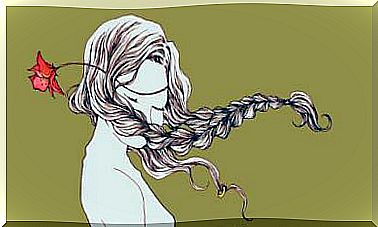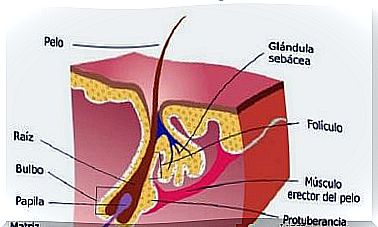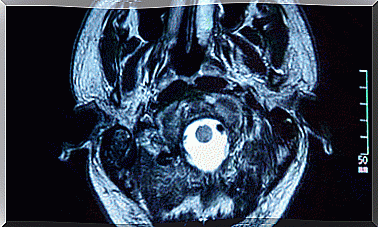Learn About The 4 Yoga Postures That Almost No One Practices
Although yoga has many postures, there are some that almost no one practices, due to their great complexity and the force required to perform them. We propose you to know them and gradually prepare yourself to put them into practice.
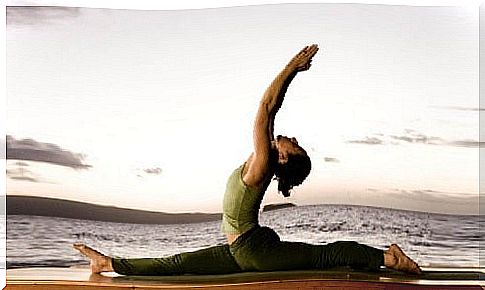
Practicing yoga is very beneficial for health. One of its advantages is that various poses require little practice time to get them done right. On the contrary, there are also some yoga poses that almost no one performs because they demand a very advanced level of technique and physical condition.
Just as there are positions suitable for people who have just started in this activity, there are also others that are much more advanced due to their complexity. That is why they are not as popular and known as the “basics”. Some of them are the ones we comment on below.
4 yoga poses that hardly anyone practices
People who have little flexibility should be much more careful when practicing any yoga posture, and not just the ones we are going to see below. It is very important to work the elasticity well to avoid injuries.
Bearing these precautions in mind, it is also worth noting the benefits of practicing this activity. For example, as confirmed by a study published by Alternative Medicine Review , yoga offers promising results for those seeking to relieve stress and anxiety.
On the other hand, research published by Evidence Based Complementary and Alternative Medicine explains that, despite its low intensity, this discipline is capable of producing positive changes in physical form. These improvements are due to the optimization of respiration and cardiac functions.
Here are some yoga poses that almost no one practices due to their complexity or the risks involved. It is important to note that they should not be done without the supervision of an instructor.
1. Posture of the eight angles
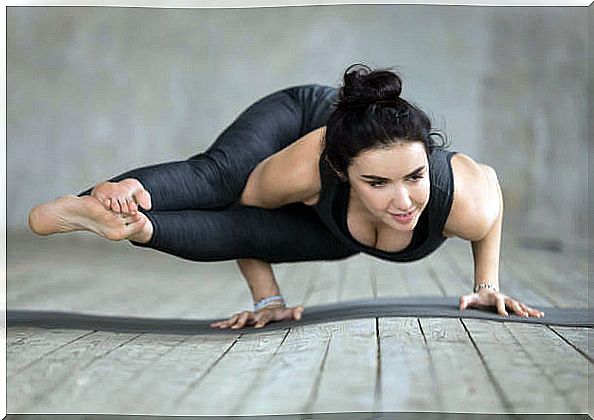
This high difficulty yoga posture is known as Astavakrasana . It is not easy to carry out, since it requires great strength in the arms. In turn, to keep the body in that position, it is necessary to have a strong abdomen.
The Astavakrasana is performed by adopting the posture of a push-up and turning the legs to the side ; we must make the arm stay between them. Then, in this position, we raise and tangle the ankles.
2. Peacock pose
This yoga posture is also known as Mayurasana. The complexity of this position is again in the difficulty to be able to support the legs and the body and avoid the loss of balance.
To do it, we must sit on the heels, support the hands on the ground with the fingers facing the feet, bend the elbows at a right angle and slide the knees towards the outside of the arms. Then, you have to lean your torso forward, lower your forehead to the ground and stretch your legs. Finally, these have to be raised at the same time as the head.
As explained in a publication of the International Journal of Trend in Scientific Research and Development , the peacock pose provides benefits such as:
- Strengthens the arms, shoulders, and upper back.
- Improve balance.
- Strengthens the spine and abdominal muscles.
- Helps relieve stress and calm the mind.
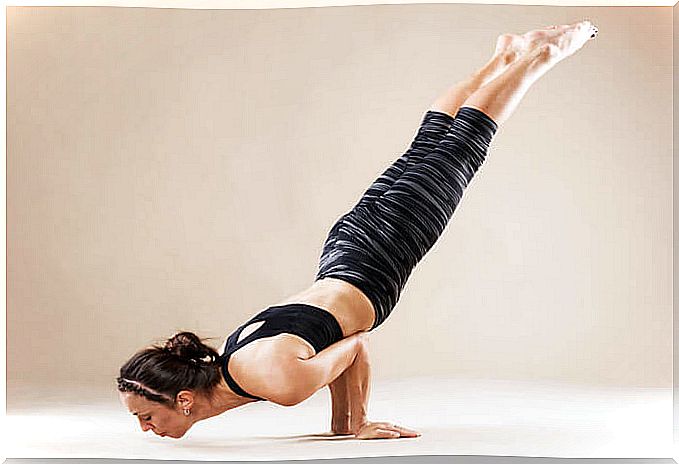
3. Firefly pose
This yoga posture is known as Tittibhasana . As with all the previous ones, it is important to warm up well before trying it, since, according to a study published by Sports Medicine , this is essential for the prevention of injuries. Foot poses and sun salutations are a good way to warm up.
This pose is performed by squatting, leaning the body forward and placing the hands on the ground with the elbows slightly bent. Next, we will bring our knees towards our shoulders and we will raise our legs forward by stretching them. Once we are in position, we will stretch our arms until they are as straight as possible.
Ultimately, keep in mind that the firefly pose is contraindicated for people with carpal tunnel syndrome and similar wrist problems.
4. Crane pose
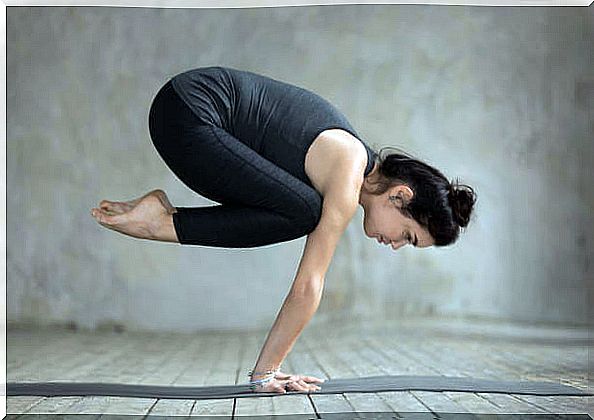
The last of the postures that almost no one practices is that of the crane or Bakasana . It is a balancing posture on the arms that, according to the Hindu tradition, improves concentration and brings focus, mental clarity and calm.
When executing this pose, all limbs are connected, which enhances stability and balance. It will even improve the soul, mental and spiritual well-being.
This posture is carried out by crouching as if we were going to jump, placing the hands on the ground and bending the elbows. Next, we’re going to stand on tiptoe and lean forward. The weight will fall all on the hands.
In this position, we will place our knees on the back of the arms and raise our feet. Once we have achieved this, we have to try to stretch our arms and look forward.
It is advisable to look for a fixed point in front before lifting the feet and tilting the posture; this will help to find the balance. On the other hand, if we are concerned about hitting the ground when lifting our feet and leaning forward, a cushion can be placed to be more secure.
Learn yoga poses with patience and technique
Before concluding, it is appropriate to make clear that these positions are not learned overnight. If you are just starting out in yoga, it is recommended that you master the most basic first and then dare with these, which are more complex.
Ultimately, it is highly advisable to be supervised by a trained instructor. In this way, in addition to promoting a safer practice of the discipline, good technique is acquired, which is vital for the prevention of injuries.




